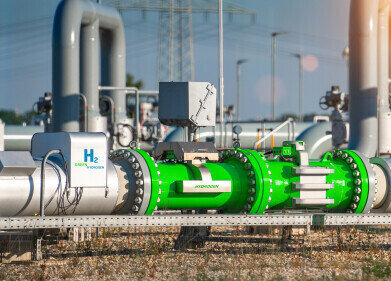Biofuel industry news
New Multi-Dimensional Gas Chromatography System for Structure and Quality Control Analysis
Aug 06 2009
Shimadzu Scientific Instruments’ (USA) new Multi-Dimensional Gas Chromatography system (MDGC) expands the capabilities of chemists who perform target compound analyses in complex sample matrices, including natural product extracts, food and flavor components, and biological extracts.
Traditionally, a single-column approach to these analyses has proven to be problematic because the complex nature of the matrices makes the separation of the target analytes from matrix interference extremely difficult. This new multidimensional heart-cutting system, incorporating a “multi-Deans switch,” greatly increases separation power by combining two capillary columns of different selectivity for a more efficient separation of the target analytes from a complex sample matrix. The improved separation of the analytes from the matrix interferences allows more positive identification and improved quantitative analysis of the target analytes. The key hardware component of the MDGC system is a capillary-optimized pressure switching device (“multi-Deans switch”) that directs flow from the first column directly to a monitor detector or to the second column and detector. This device has no moving parts, but is based on the use of an advanced electronic flow controller to balance the pressure on both sides of the transfer line between columns. Multiple heart-cuts can be made from the first column without shifting the retention times of compounds eluting after the cuts, greatly simplifying method development. A fully integrated software package, which can be used with either GCsolution or GCMSsolution software, simplifies the method development and operation of the system. Column and restrictor dimensions are simply input into the wizard and the software calculates the proper pressure and column flow set points for 100 percent sample transfer through the switch. The software then displays the uncut first dimensional chromatogram in a window. A heart-cutting program is built by simply moving the mouse over the chromatogram and clicking the beginning and end of the cut times for the analytes of interest. Clicking on one button adds method parameters to the instrument control software, with no manual entry of parameters required.The system offers flexibility by allowing the use of any combination of GC and MS detectors. The dual-oven system eliminates the need for cryo-trapping, allowing for faster overall analysis times and independent temperature control of each column. This configuration provides the most flexibility in optimizing the separation on both columns for the best resolution of target analytes from complex matrix interferences without cryogenic trapping. The more economical single-oven design with cryo-trapping can be chosen to minimize the equipment footprint.
Digital Edition
PIN 26.1 Feb/Mar 2025
March 2025
Analytical Instrumentation - Elemental Analysis for Quality and Process Control at Refineries, for Lubricants and Wear Metals in Engine Oils - Synthetic Lubricants: New Developments - Scaling...
View all digital editions
Events
Apr 08 2025 Birmingham, UK
Apr 08 2025 Kielce, Poland
Apr 08 2025 Ravenna, Italy
Apr 08 2025 Southampton, UK
Apr 08 2025 London, UK



















